Photographs: Arko Datta/Reuters
People could not usher in 2009 with great fanfare, with the memories of the horrific Mumbai attacks still fresh in their minds. The year was, by and large, peaceful compared to 2008, which saw a series of blasts across the country at various times and culminated with the Mumbai attacks.
May be 2008 taught many lessons to India, as security across the country was tight and vigilant.
Interestingly, security agencies also arrested various local terrorists, curbing terror activities to a large extent.
2009 was dedicated to strategies and damage control exercises, in a bid to curb terror activities in India.
rediff.com's Vicky Nanjappa summarises the terror diary of India in 2009.How India fought terrorism in 2009
Image: The blast site in GuwahatiPhotographs: Utpal Baruah/Reuters
The Centre largely focused the entire year on investigations into the Mumbai attacks. Four months after the attack, the chargesheet was filed and 12 Pakistanis, apart from the lone surviving gunman Ajmal Kasab, were named in it.
Indians decided not to forget the failures of the previous year and kept up the pressure on the Centre to act on terror.
The attacks in 2008 were clear sign that there were many failures within the inteliigence and anti-terror system, lack of coordination among security agencies, which made the job of terrorists easier.
The government of India then set up a multi-agency centre apart from a nodal agency within the Intelligence Bureau, which was made responsible for coordination.
Apart from this, subsidiary multi agencies were also set up that were responsible for maintaining a data bank regarding terrorists and their outfits.
On January 1, 2009, three blasts rocked Assam in that left killed at least five people and ijured many others. The serial blasts were just ahead of the home minister's visit to the state. The police claimed that the United Liberation Front of Asom was behind the blasts.
On January 3, the Uttar Pradesh police made a big catch they arrested members of a local terror outfit sponsored by the Lashkar-e-Tayiba in Mirzapur and seized 5,200 kg of ammonium nitrate, 41 bundles of fuse wire, 300 detonators, 157 detonator chargers, a pistol, a rifle and some cartridges from them.
How India fought terrorism in 2009
Image: An officer surveying the blast site in Bengaluru in 2008Photographs: KPN Photo
On January 5, the Indian government handed over its first lot of evidence to Pakistan stating the neighbouring country's role in the Mumbai attacks.
The government also stepped up pressure on Pakistan to hand over the terrorists the dossier had named.
On January 7, the Gujarat police made a key breakthrough in the 2008 serial blasts in Ahmedabad by arresting a man named Ghulam Mustafa, who had allegedly also planned on carrying out more attacks in the state.
Three days later, Indian forces arrested Pakistan's Inter Services Intelligence agent Amir Ahmed, who carried documents containing information on anti tank guided missiles on him.
Reacting to the multiple terror attacks, the Centre decided to strengthen local intelligence gathering.
The Indian government formed the National Investigating Agency, whose role was to investigate all cases pertaining to terrorism across the country. The first NIA chief was Radha Vinod Raju.
In January, there was an important breakthrough in the Bengaluru blasts case with the arrest of E T Zainudheen alias Abdul Sattar, a native of Malappuram district in Kerala. Sattar was closely associated with Riyaz Bhatkal, an Indian Mujahideen operative.
The Union home ministry restructured two of its divisions, the internal security and the police services and allotted more officers for anti-terror operations.
An alleged key Students Islamic Movement of India operative Amil Parvesh was arrested in Kerala. Parvesh had confessed that he had trained several people in making bombs.
He said he had been sent from Madhya Pradesh to southern India to train cadres.How India fought terrorism in 2009
Image: The lone arrested gunman Ajmal Kasab during the 26/11 attacks at CSTPhotographs: Courtesy: Sebastian D'Souza/Mumbai Mirror
In February, the investigation into the Mumbai attacks got a boost with the Federal Bureau of Investigation passing on evidence to India stating that the entire plan for the blasts had been hatched in Pakistan.
The FBI handed over details of the VoIP and satellite phone conversation details between terrorists involved in the Mumbai attacks.
In March, the Bengaluru police arrested Sarfaraz Nawaz, who had been allegedly sent from Muscat to the city to fund the blasts in 2008. Nawaz was the first evidence to ULFA links with terrorism in India.
He also confirmed India's suspicion that several rich men in the Gulf were raising funds to facilitate terror attacks in India.
Indian agencies also learnt that the LeT had, for the first time, used cadres from Kerala for their Kashmir operations.
Cadres Fiyaz Ahammed, Sajad Ahammed Reshi and Shabbir Ahammed Tal had taken part in the terror camp organised by the LeT in Kupwara and Dorusa forest areas in Kashmir.
On March 23, the trial in the Mumbai case commenced with Kasab confirming that he was a Pakistan national. The prosecution proposed 312 charges against him.
On April 6, another blast rocked Assam in which six people were injured.
How India fought terrorism in 2009
Image: Lashkar founder Hafiz Saeed outside a Lahore courtPhotographs: Mohsin Raza/Reuters
In May, India expressed displeasure over Pakistan's handling of perpetrators of the Mumbai attacks.
After a Pakistani court released Lashkar founder Hafeez Saeed, Home Minister P Chidambaram said Pakistan did not show any seriousness and commitment.
The Delhi police arrested Omar Madani, who had allegedly helped various militants cross over from Pakistan to India through Nepal. The police also said that Madani had prepared an accurate route map for the same, which was used by the Mumbai mapmaker Fahim Ansari.
In June, the government decided to increase the number of coastal police stations in the country, and ordered better coordination between the navy, coast guard, the marine police of states and intelligence agencies.
Further, the government also decided to introduce identification cards for residents in coastal villages. The government said the entire process would be completed by March 2010. Also, the government asked states to form their own anti-terrorist squads.
In July, Pakistan handed over a 36-page dossier to India that confirmed that the LeT had carried out the Mumbai attacks.
The dossier termed Lashkar operations chief Zaki-ur-Rehman Lakhvi as the mastermind of the attacks and admitted that Kasab was a Pakistani.
How India fought terrorism in 2009
Image: Terrorists at Pakistan occupied KashmirIn August, India handed over another dossier to Pakistan on the Mumbai attacks that pressed the need to prosecute Lashkar boss Hafiz Saeed.
The dossier, comprising a seven-page summary and 60 pages of annexure, contained replies to queries posed by Pakistan with regard to investigation and legal process involved in the 26/11 attacks case.
A special Prevention of Terrorism Act court sentenced to death three people in connection with the bomb blast case of August 2003 in Mumbai. The court convicted the three accused Hanif Sayed, his wife Fahmeeda and Ashrat Ansari.
A paramilitary force called the Sashastra Seema Bal set up 578 security posts on the Bhutan and Nepal border to curb infiltration by terrorists.
In August, the government proposed to enact a federal anti terror law to give more powers to the NIA. The government also decided to set up a centralised system to monitor communications on mobile phones, internet and landlines.
On August 30, Vikki, son of fake currency racket kingpin kingpin Majid Manihar, was arrested for being an ISI agent from Uttar Pradesh. He revealed that counterfeit currency was printed in Lahore and Karachi in Pakistan from where it is sent to Nepal by cargo and then to India.
The entire operation is managed by the ISI through its Nepal-based agent Manihar, Vikki's father, he revealed.
Sudhanshu Sudhakar, a dismissed Indian army jawan, was arrested for being an agent for the ISI. He had been tipping off the ISI on operations of the Indian Army to help terrorists infiltrate into India.How India fought terrorism in 2009
Image: People light candles at a vigil to commemorate the Mumbai attacks in 2008Photographs: Rupak De Chowdhuri/Reuters
October saw a turning point in investigations into the Mumbai attacks. The Federal Bureau of Investigation of US picked up two suspected Lashkar operatives David Headley and Tawwahur Rana in connection with a plot to attack a Danish newspaper.
Later it came to light that the two men had been involved in the Mumbai attacks and had carried out many recce of the attacked targets.
On November 14, a spy from Pakistan was picked up in New Delhi while trying to board a flight to Saudi Arabia. He carried important defence documents on him.
The same month, the home minister announced the setting up of a DNA data bank in India, modernisation of forensic labs and mobile units apart from setting up of global unique file descriptors.
On November 16, nuclear installations in the country were put on high alert after the FBI found that Headley had them on the terror radar.
The Border Security Force gained custody of T Naseer, a Lashkar operative in Bangladesh, who had allegedly masterminded the Bengaluru blasts apart from sending cadres from Kerala to Kashmir to fight alongside Lashkar operatives.
The first anniversary of the Mumbai attacks on November 26 was marred by controversy with the wife of late police officer Ashok Kamte alleging that the Mumbai police had not enough to save her husband.
Two days later, the home ministry said Rs 1.47 billion has been sanctioned to establish a secure online connectivity between various security agencies.
This was in addition to the Rs-41.85 billion scheme for modernising the Central Paramilitary Forces. Under this scheme, the force would be equipped with latest weapons, surveillance and communication facilities and body-protection gear.
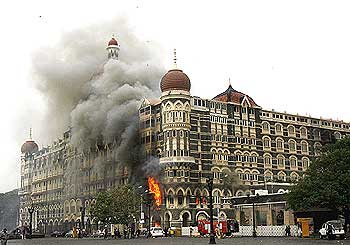

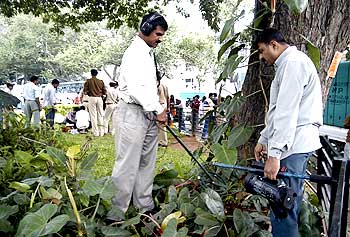
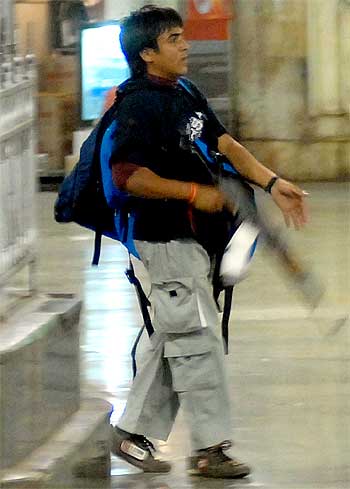
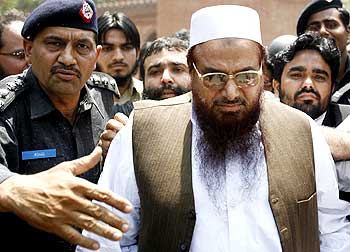

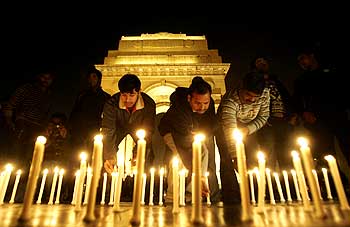
article